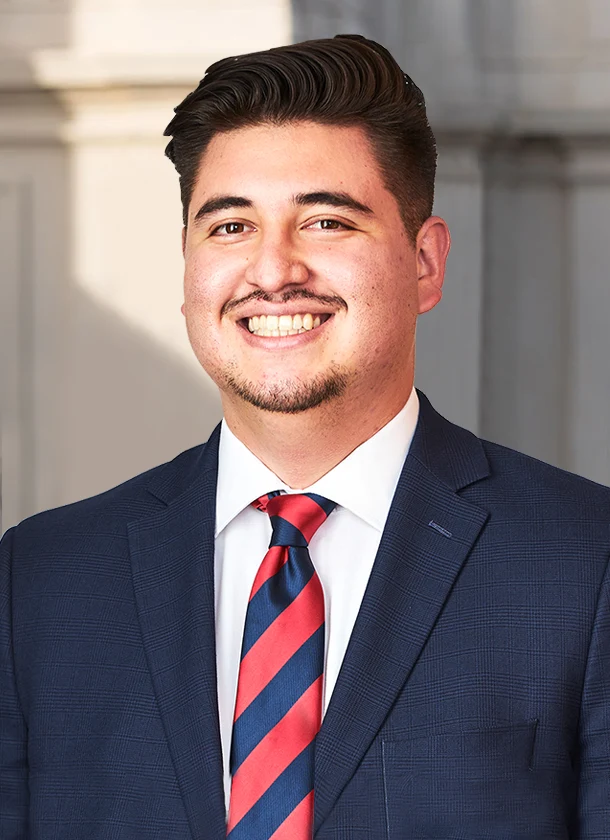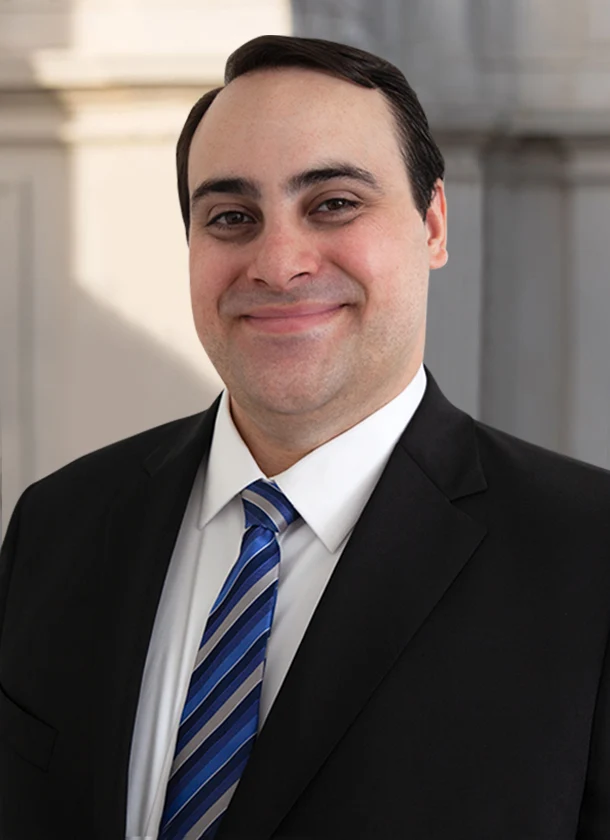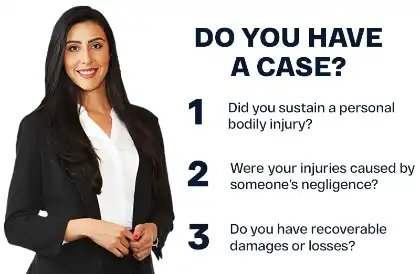Santa Maria Hit-And-Run Accident Attorneys
We’ll tell you if you have a case or not, call (888) 488-1391 — We’re here 24 hours a day.
Our Hit-And-Run Accident Attorneys Offer Supportive Counsel During Difficult Times
Santa Maria is the most populous city in Santa Barbara County, located about 65 miles northwest of Santa Barbara and 150 miles northwest of Los Angeles. It is situated near California’s Central Coast. If you’re involved in a hit-and-run accident in Santa Maria, our lawyers can explain your rights and legal options. We can help you navigate the legal process and assist you in seeking compensation for your injuries and damages.
Santa Maria is well-known for its connection to the wine industry, with numerous vineyards, wineries, and winemakers, as well as its distinctive Santa Maria-style barbecue, which focuses on beef tri-tip. Other attractions in the city include the Santa Maria Valley Discovery Museum, the DANA Adobe & Cultural Center (“Casa de Dana”), the Pacific Conservatory Theatre (PCPA), the Santa Maria Museum of Flight, and Los Flores Ranch Park.
The United States Census reports that Santa Maria had a population of 109,711 as of July 1, 2021, with 76.7% of residents being Hispanic or Latino, 15.4% being white, 12.7% being two or more races, 4.9% being Asian, 1.3% being Black or African-American, and 1.0% being American Indian and Alaska natives. The population was 50.6% female, with 10.3% being 65 years of age or older, 31.1% being under 18 years of age, and 10.0% being under 5 years of age.
The California Employment Development Department (EDD) reports that the biggest employers in Santa Maria include Hardy Diagnostics, Manzanita Berry Farms, Marian Regional Medical Center, and Safran Cabin. Santa Maria Regional Transit (SMRT) is the local bus service in Santa Maria, serving the surrounding communities in Santa Barbara County.
If you suffer serious injuries or your loved one dies in a hit-and-run accident in Santa Maria or another nearby community in Santa Barbara County, our accident attorneys at Arash Law provide legal guidance and support. We offer a free initial consultation to discuss your situation and assess if you may have a valid claim. You can call us at (888) 488-1391 or contact us online.
Car Accident
A farm worker, suffered multiple broken bones and other orthopedic injuries resulting from an auto accident where the defendant driver attempted to make a left turn in front of our client in heavy fog.– ARASH KHORSANDI
Santa Maria Motor Vehicle Accident Statistics
According to the California Office of Traffic Safety (OTS), Santa Maria had 459 people killed or injured in traffic accidents, and the city ranked ninth in crashes involving pedestrians less than 15 years of age, with eight, and 15th in alcohol-involved crashes with 62. The city also had 430 arrests for driving under the influence (DUI), 93 speed-related crashes, and 54 hit-and-run accidents.
KEYT-TV reported that the Santa Maria Police Department stated that 344 car crashes occurred during one recent year, marking a 30% increase from the previous year, and the city was increasing traffic patrols. While accidents were occurring throughout Santa Maria, they were more prevalent on busier streets, such as Betteravia, Broadway, Main Street, and Donovan, with the majority of accidents taking place between 11:00 a.m. and 7:00 p.m.
The University of California, Berkeley (UC Berkeley) Transportation Injury Mapping System (TIMS) Statewide Integrated Traffic Records System (SWITRS) shows that Santa Maria had 352 total crashes in the most recent year, resulting in two people killed and 486 injured. In addition to the two fatal accidents (0.57%), 22 (or 6.25%) were categorized as severe injury crashes, 92 (or 26.14%) were other visible injury crashes, and 236 (or 67.05%) were complaints of pain crashes.
The crashes included 26 bicycle crashes (7.4%), 17 pedestrian crashes (4.8%), and 12 motorcycle crashes (3.4%). The most common causes of these crashes included 92 unsafe speeds (26.51%), 72 automobile right-of-ways (20.75%), 50 people being under the influence of alcohol or a drug (14.41%), 48 traffic signals and signs (13.83%), 38 improper turnings (10.95%), and 15 unsafe starting or backing (4.32%).
The AAA Foundation for Traffic Safety reported that a hit-and-run crash happens every single minute on roads in the United States. AAA said that the 2,049 deaths resulting from hit-and-run crashes during the most recent reporting period were the most on record and were also a 60 percent increase over the past seven years.
Why Drivers Commit Hit-And-Run Offenses
The reasons why a driver might decide to leave the scene of an accident instead of exchanging their information as is required under state law can vary depending on the circumstances. Hit-and-run drivers come from all walks of life. Whether the driver was a frightened teenager, a possible drunk driver, or a confused senior citizen, every hit-and-run driver can still be accountable for not fulfilling their obligations following a crash under state law.
Common reasons people might leave the scenes of traffic accidents can include, but are not limited to:
- Driving under the influence of alcohol or drugs.
- Lacking a valid driver’s license or auto insurance.
- Having an outstanding warrant.
- Being in the country without legal authorization.
- Driving a stolen vehicle.
- Possessing illegal items such as drugs or firearms.
- Driving a company vehicle and attempting to avoid workplace repercussions.
- Acting out of panic or fear.
California Hit-And-Run Laws
California Vehicle Code § 20002 is the state law establishing that any person driving a motor vehicle involved in an accident causing injury or death to another person must immediately stop their vehicle at the scene of their accident and fulfill the requirements of both California Vehicle Code § 20003 and California Vehicle Code § 20004. A person must take these steps whether they are involved in an accident causing property damage, injury, or death.
A driver must stop their vehicle at the nearest location that does not impede traffic or otherwise jeopardize the safety of other motorists. They then must immediately do either of the following:
Locate and notify either the vehicle owner or any person in charge of the damaged property of the name and address of the driver and the owner of the vehicle involved. After locating the driver of any other motor vehicle involved or the owner or person in charge of any other kind of damaged property, on request, present their driver’s license and vehicle registration to the other driver, property owner, or person in charge of the property.
The information a person provides must include the current residence address for both the driver and the registered owner. If a registered owner of an involved vehicle is present at the scene, they must also, upon request, present their driver’s license information or some other kind of valid identification to the other involved parties.
- Leave some written notice on a motor vehicle or damaged property that provides the name and address of a driver and the owner of the vehicle involved, as well as a statement of the circumstances, and must, without delay, notify the police department of the city where a collision occurred. When a collision occurs in the unincorporated territory, the driver and owner should inform the local headquarters of the California Highway Patrol.
Failure to follow these steps may constitute a criminal offense. Drivers may face misdemeanor or felony charges, with classifications typically dependent on the extent of the damage caused.
Prohibitions Under California Vehicle Code § 20002
People violate California Vehicle Code § 20002 if any of the following apply to them:
- They are a driver leaving the scene of a motor vehicle accident.
- They are a driver who does not identify themselves to other involved parties.
- They cause damage to another party’s property.
California Vehicle Code § 20002 Definition Of A Hit-And-Run Accident
When a hit-and-run accident results in criminal charges for an alleged offender, their criminal case will involve a prosecutor needing to prove all of the following elements beyond a reasonable doubt:
- The alleged offender was driving and was involved in a motor vehicle accident.
- The alleged offender’s accident caused damage to another party’s property.
- The alleged offender knew that they were involved in an accident causing property damage, injury, or death.
- The alleged offender willfully failed to stop at the scene of an accident or provide the owner or person in control of damaged property with their name and current residence address.
California Vehicle Code § 20002 Punishments
Many hit-and-run offenses causing only property damage are classified as misdemeanor offenses, which can result in up to six months in the county jail and/or a fine of up to $1,000. Additional penalties may include three years of probation, restitution for damages, and two points on a California driving record.
Some misdemeanor charges may be punishable by up to one year in county jail, a fine of up to $10,000, restitution to victims for property damage, and/or two points on the California driving record. When a hit-and-run accident results in injuries or death, the offense is typically charged as a felony. Penalties can include up to four years in state prison, a fine of up to $10,000, restitution to victims for property damage, and two points on the California driving record.


How Our Hit-And-Run Lawyer In Santa Maria Can Help With Your Case
- Legal Experience and Guidance — Our hit-and-run lawyers possess knowledge and experience in handling cases involving hit-and-run accidents. They are familiar with the specific laws and regulations regarding hit-and-run incidents, enabling them to provide victims with tailored legal advice and guidance that addresses their unique circumstances.
- Investigation and Gathering Evidence — One of the crucial aspects of a hit-and-run case is gathering evidence to identify the responsible party. Our lawyers work diligently to thoroughly investigate the accident, collaborating with law enforcement agencies, private investigators, and accident reconstructionists. By collecting witness statements, reviewing surveillance footage, and examining physical evidence, our legal team strives to build a well-supported case for the victims.
- Pursuing Compensation — Victims of hit-and-run accidents often face numerous physical, emotional, and financial challenges. Our hit-and-run lawyers are committed to helping victims pursue compensation for their injuries and losses. They work to identify all potential sources of compensation, including insurance policies such as uninsured motorist coverage. Our lawyers can handle all aspects of the legal process, including negotiations with insurance companies and, if necessary, taking the case to court to seek compensation under the law.
- Advocacy and Legal Representation — Navigating the legal system can be overwhelming for victims, especially when they’re still recovering from their injuries. Our hit-and-run lawyers provide advocacy and legal representation, helping to protect their rights. They handle all communication with insurance companies, opposing parties, and other legal entities, allowing victims to focus on their healing.
Related Criminal Offenses In Hit-And-Run Accidents
Driving Without A License, California Vehicle Code § 12500
California Vehicle Code § 12500 makes it unlawful for a person to drive without a valid driver’s license. The offense is considered a wobbler, meaning it may be charged as either a misdemeanor or an infraction.
A misdemeanor is punishable by up to six months in jail and/or a fine of up to $1,000. An infraction can result in a fine of up to $250.00, but it does not lead to jail time.
It is important to note that California Vehicle Code § 12500 applies to individuals who do not renew their driver’s licenses, never obtain a driver’s license, or become California residents but do not get new licenses within 10 days. When a person drives on a suspended or revoked license, criminal charges for a traffic offense are instead filed under California Vehicle Code § 14601.1(a).
Jury Instructions In California For Driving Without A License Offenses
Cases involving driving without a license, in violation of California Vehicle Code § 12500(a), are governed by California Criminal Jury Instructions (CALCRIM) No. 2221. These instructions require the prosecution to prove the following elements beyond a reasonable doubt:
- The alleged offender drove a motor vehicle on a highway.
- When the alleged offender drove, they did not have a valid California driver’s license.
A third component involves determining whether the alleged offender was exempt from the requirement to have a California driver’s license. Whether the alleged offender was properly licensed is a matter within their own knowledge.
The alleged offender bears the burden of producing evidence that they held a valid driver’s license. An alleged offender must produce evidence demonstrating that they held a valid driver’s license. If the evidence raises a reasonable doubt in a jury’s mind as to whether the alleged offender held a valid driver’s license, the jury must return a verdict of not guilty.
DUI, California Vehicle Code § 23152
Under California Vehicle Code § 23152, it is illegal for a person to drive a vehicle when they:
- Are under the influence of alcohol.
- Have 0.08% or more alcohol in their blood.
- Are addicted to the use of any drugs.
- Have 0.04% or more alcohol in their blood and are driving a commercial motor vehicle.
- Are under the influence of any drugs.
- Are under the combined influence of alcohol and a drug.
While some DUI cases can involve aggravating factors that increase the possible criminal charges, most DUI charges work as follows:
- First DUI Offense in 10 years
- Probation: 3–5 years of summary probation.
- DUI School:
- 3 months (30 hours) if BAC is under 0.15%.
- 6 months (60 hours) if BAC is 0.15%–0.19%.
- 9 months (90 hours) if BAC is 0.20% or higher.
- Additional Requirements: Attendance at a victim impact panel.
- Fines: Up to $1,000.
- License Suspension: 6 months.
- Jail Time: Up to 6 months.
- Second DUI in 10 years
- Probation: 3–5 years of summary probation.
- DUI School: 18-month or 30-month course.
- Fines: Up to $1,000.
- License Suspension: 2 years.
- Jail Time: Up to 1 year.
- Third DUI in 10 years
- Probation: 3–5 years of summary probation.
- DUI School: 30-month course.
- Fines: Up to $1,000.
- License Suspension: 3 years.
- Jail Time: Up to 1 year in county jail.
California Jury Instructions For DUI Offenses
Violations of California Vehicle Code § 23152 subsections (a), (f), and (g) lead to CALCRIM No. 2110, which states that a prosecutor must prove the following to convict an alleged offender of DUI:
- The alleged offender drove a vehicle.
- When they drove, the alleged offender was under the influence of alcohol, a drug, or alcohol and a drug.
A person is considered under the influence when, due to the consumption of alcohol, drugs, or a combination of both, their mental or physical abilities are so impaired that they are unable to operate a motor vehicle with the caution of a sober person using ordinary care under similar circumstances.
The manner in which the alleged offender was driving, by itself, is not sufficient to establish whether they were under the influence of alcohol, drugs, or a combination of the two. These factors are considered in light of all surrounding circumstances when deciding whether an alleged offender was under the influence. If the state proves beyond a reasonable doubt that an alleged offender’s blood alcohol level was 0.08% or more at the time of chemical analysis, a jury can but is not required to conclude that the alleged offender was under the influence of alcohol at the time of an alleged offense.
It is not a defense that the alleged offender was legally entitled to use a drug. Claiming that another factor caused their impaired driving is not a valid defense under California law.
Felony Hit-And-Run, California Vehicle Code § 20001
California Vehicle Code § 20001(a) establishes that a driver of any motor vehicle involved in an accident resulting in injury to another person or in the death of another person must immediately stop their vehicle at the scene of an accident and fulfill the requirements of California Vehicle Code § 20003 and California Vehicle Code § 20004. Violations of this state law can result in a sentence of up to one year in state prison or county jail and/or a fine of up to $10,000.
California Vehicle Code § 20001(c) further states that a person who flees the scene of a crime after committing a violation of California Penal Code § 191.5 relating to gross vehicular manslaughter or California Penal Code § 192(c)(1) relating to manslaughter can be subject to an additional term of five years in state prison.
California Jury Instructions For Felony Hit-And-Run Offenses
Failure to perform duty following an accident causing death or injury under California Vehicle Code § 20001, California Vehicle Code § 20003, and California Vehicle Code § 20004 will lead to jury instructions being CALCRIM No. 2140. CALCRIM No. 2140 provides that the state must prove the following:
- The alleged offender was involved in a motor vehicle accident while driving.
- Their motor vehicle accident caused the death of or permanent, serious injury to another person.
- They knew that they had been involved in an accident that had injured another person or knew from the nature of the accident that it was probable that another person had suffered an injury.
- They willfully failed to perform one or more of the following duties:
- Immediately stop at the scene of the accident.
- Provide reasonable assistance to any person injured in the accident.
- Give to the person struck, the driver or occupants of any vehicle collided with, or any peace officer at the scene of the accident, all of the following information:
- Their name and current residence address.
- The registration number of the vehicle they were driving.
- The name and current residence address of the owner of the vehicle, if they are not the owner.
- The names and current residence addresses of any occupants of their vehicle who suffered an injury in the accident.
- When requested, show their driver’s license, if available, to the person struck, the driver or occupants of any vehicle collided with, or any peace officer at the scene of the accident.
- Without unnecessary delay, notify either the police department of the city where the accident happened or the local headquarters of the California Highway Patrol if the accident happened in an unincorporated area.
The instructions note that people can commit acts willfully when they do them willingly or on purpose, meaning it is not necessary that people intend to break laws, hurt someone else, or gain any advantage.
The duty to stop immediately means that a driver must stop their vehicle as soon as reasonably possible under the circumstances. Providing reasonable assistance means a driver needs to determine what assistance, if any, an injured person needs and make a reasonable effort to see that such assistance is provided, either by the driver or someone else.
Juries must all agree that the state proved that an alleged offender failed to perform at least one of their required duties. They also need to agree on the duty that the alleged offender failed to perform.
DUI Causing Injury, California Vehicle Code § 23153
Under California Vehicle Code § 23153, it is illegal for a person, while under the influence of alcohol, to drive a vehicle and also perform any legally forbidden act or neglect any legal duty in driving a vehicle when an act or neglect proximately causes bodily injury to another person, or while they have 0.08% or more of alcohol in their blood, to drive a vehicle and perform any legally forbidden act or neglect any duty imposed by law while driving a vehicle when the act or neglect proximately causes bodily injury to another person. A victim does not have to be a person outside of an alleged offender’s vehicle because victims can be passengers in the vehicles of alleged offenders.
DUI causing injury is also a wobbler offense, which may result in misdemeanor or felony charges. A misdemeanor can result in summary probation for three to five years, up to one year in county jail, a fine of up to $5,000, completion of California DUI school, a driver’s license suspension of up to three years, and restitution to any injured parties.
A felony may lead to up to four years in state prison, a “strike” on a person’s criminal record according to California’s Three Strikes Law if any person apart from the alleged offender suffers great bodily injury, a fine of up to $5,000, Habitual Traffic Offender (HTO) status for three years, completion of a court-approved DUI school, and a five-year revocation of the defendant’s driver’s license.
California Jury Instructions For DUI Causing Injury Offenses
When an alleged offender is charged with causing injury to another person while they were driving with a blood alcohol level of 0.08% or more in violation of California Vehicle Code § 23153(b), then CALCRIM No. 2101 will be applicable. To establish that an alleged offender committed this crime, the state must demonstrate that:
- The alleged offender was driving a vehicle.
- While they were driving, the alleged offender’s blood alcohol level was 0.08% or more by weight.
- While the alleged offender was driving with that blood alcohol level, they also committed an illegal act or neglected to perform a legal duty.
- The alleged offender’s illegal act or failure to perform a legal duty caused bodily injury to another person.
For an alleged offender to be guilty, all members of a jury must agree that the state proved the offender committed at least one illegal act or neglected a legal duty. The jury also needs to agree on which act the alleged offender committed or which duty they failed to perform.
Exhibition Of Speed, California Vehicle Code 23109(c)
California Vehicle Code § 23109 is the state law providing that people cannot engage in motor vehicle speed contests on highways, aid or abet in any speed contest on any highway, or, for the purpose of facilitating or aiding or as an incident to any speed contest or exhibition upon a highway, in any way obstruct or place a barricade or obstruction or assist or participate in placing a barricade or obstruction upon any highway. California Vehicle Code 23109(e) establishes that convictions can be punishable by up to 90 days in county jail and/or a fine of up to $1,000, but when violations cause bodily injury to another person, they can be punishable by up to six months in county jail and/or a fine of up to $1,000.
Repeat offenses committed within five years of prior offenses may be subject to aggravated penalties.
California Jury Instructions For Exhibition Of Speed Offenses
Alleged offenders charged with engaging in an exhibition of speed in violation of California Vehicle Code § 23109 will be dealing with CALCRIM No. 2202. The jury instructions provide that the state must prove the following:
- An alleged offender was driving a motor vehicle on a highway.
- While they were driving, an alleged offender willfully engaged in an exhibition of speed.
A person commits an act willfully when they do the act willingly or on purpose, but they do not have to intend to break the law, hurt another party, or gain any advantage. Engaging in an exhibition of speed involves a person accelerating or driving at a rate of speed that is dangerous and unsafe to show off or make an impression on someone else.
Such a definition means the state must prove that an alleged offender acted with the intent to show off or attract attention. However, the state does not have to prove that the alleged offender intended to impress any specific individual.

Motor Vehicle Accident
Settlement in a motor vehicle accident; client suffered internal injuries.– JUDD ROSS ALLEN
Statute Of Limitations For Hit-And-Run Accident Lawsuits
The statute of limitations for a hit-and-run accident may be criminal or civil. According to the Judicial Branch of California, the statute of limitations for most personal injury claims is two years, but Assembly Bill No. 184 extended the criminal statute of limitations for a hit-and-run offense from three to six years.
While the statute of limitations is shorter for civil personal injury claims, there are exceptions in certain cases that might allow for the limitations period to be extended. These situations include a victim being a minor (in which case they have two years to file after turning 18 years of age), a victim not being mentally competent at the time of an accident, and an alleged offender evading service out of fraud or being out of the country.
Our Santa Maria hit-and-run accident attorneys can help you understand the deadline and any applicable exemptions for your case. They can also assist in preparing and submitting the necessary paperwork in a timely manner.
How Does Law Enforcement Find A Hit-And-Run Driver?
It is important to involve local authorities as soon as possible after a hit-and-run accident. Police officers have multiple methods to investigate such incidents and identify possible drivers. Common investigative steps may include:
- Performing searches of accident scenes and the surrounding areas to locate alleged offenders and their vehicles.
- Conducting interviews with other drivers, passengers, and witnesses who may be able to provide more detailed descriptions of alleged offenders and their vehicles.
- Retrieving surveillance footage from establishments in the area that might provide information about the vehicles involved.
- Examining damage to vehicles involved or property struck, and using paint left behind or other evidence that determines an alleged offender’s vehicle.
Insurance Compensation For Hit-And-Run Accidents
When a victim suffers injuries in a hit-and-run accident, it is often the insurance company representing the alleged offender that becomes responsible for paying damages to the victim. Many victims are facing financial strain following their accidents, including medical expenses, lost wages, and property damage claims.
Even when an alleged offender is identified and facing criminal charges, seeking compensation for damages can still be challenging. Working with a Santa Maria hit-and-run accident attorney can help protect your rights and pursue appropriate legal remedies. Because insurance settlements can be complex, it is generally advisable to have an attorney handle all negotiations on your behalf.
Filing a claim after a hit-and-run accident can present several challenges. Some of the most common issues include:
- Delays in Processing — Claims may take time to process while investigations are conducted, which can leave victims waiting for compensation to cover medical bills, repairs, or other expenses.
- Claim Denial — In some cases, claims may be initially denied, even when the policy clearly covers the incident. Understanding the reasons for denial and how to respond can be critical to pursuing compensation. Working with a hit-and-run accident attorney in Santa Maria can help manage the claims process, meet all deadlines, and address any denials.
- Lowball Settlement Offers — Initial settlement offers may not fully cover the costs associated with the accident. Victims often need guidance to determine whether an offer adequately addresses medical expenses, property damage, lost wages, and other related costs.
- Refusing to Settle — Some claims may encounter resistance in reaching a resolution, which may require additional steps, such as formal negotiation or legal action, to pursue appropriate compensation.
Type Of Damages Available In A Hit-And-Run Accident Case
A hit-and-run accident in Santa Maria can be a traumatic experience, but you don’t have to go through it alone. Santa Maria hit-and-run accident attorneys are here to help you seek compensation to cover your losses. From negotiating with insurance companies to representing you in court, these attorneys have the experience and knowledge to guide you through the legal process and support your recovery.
Economic damages refer to actual, tangible losses, such as:
- Past, present, and future lost wages.
- Past, present, and future medical bills.
- Property damage.
- Reduced earning potential.
- Other out-of-pocket costs.
Non-economic damages refer to more subjective types of harm but are difficult to quantify. Common examples of non-economic damages include:
- Physical disfigurement
- Emotional distress
- Disability
- Pain and suffering
- Loss of enjoyment of life
Steps To Take After A Hit-And-Run Accident
After any motor vehicle accident in California, there are several important steps to follow so you can protect your health and potential compensation claim. Here are suggested actions to take after a hit-and-run accident in Santa Maria:
- Remain at the Scene of the Accident and Call the Police — Do not leave the scene, even if the accident was not your fault. Reporting the accident to law enforcement promptly is important for both legal and insurance purposes.
- Seek Medical Attention — Visit a medical professional as soon as possible, even if you do not believe you were injured. A medical evaluation provides documentation of injuries and creates a record that may be important for any subsequent claims.
- Be Careful With What You Say — Avoid admitting fault at the scene or making speculations about the cause of the crash.
- Document the Scene Using Your Phone — Use your phone to take photos or videos of the scene, vehicles, license plates, skid marks, and any other relevant evidence. Multiple angles and distances can provide helpful documentation.
- Contact a Santa Maria Hit-and-Run Accident Attorney — Consulting an experienced lawyer early can help guide the investigation, protect your legal rights, and assist with any claims arising from the accident.
Seek Legal Help From Our Santa Maria Hit-And-Run Accident Attorneys
The team of Santa Maria hit-and-run accident attorneys at Arash Law understands that life can be challenging for victims after a hit-and-run accident. We provide answers to your questions and practical legal guidance on the steps you can take moving forward. Our firm handles cases on a contingency fee basis, meaning you do not owe attorney’s fees unless compensation is obtained. However, you might still be responsible for case-related costs.
The hit-and-run accident attorneys at Arash Law have years of experience managing hit-and-run cases and negotiating personal injury settlements for clients. Please note that past results do not guarantee similar outcomes in future cases.
In addition to Santa Maria, we also represent individuals in Arroyo Grande, Taft, Grover Beach, Santa Barbara, Pismo Beach, Avenal, Lompoc, Shafter, San Luis Obispo, Goleta, Morro Bay, Wasco, Atascadero, Carpinteria, and Isla Vista.





















